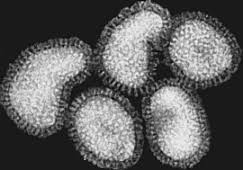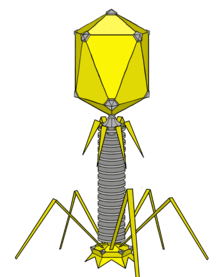Poxviridae familyis a distinct family of viral genera that contain viruses that replicate in the cytoplasm of their host cells (inclusive of vertebrate and invertebrate cells). Cowpox, smallpox or variola virus, vaccinia virus and monkey pox viruses are typical examples of viruses in this family. The Poxviridae family contains viruses that infect humans, other vertebrates, invertebrates, birds and insects.
Viruses in this family especially the poxviruses are the largest in size of all known viruses; and they generally have a double-stranded (dsDNA) genome. Entomopoxvirinae (which infects invertebrates) and chordopoxvirinae (which infect vertebrates) are the two subfamilies of the Poxviridae family; and the Chordopoxvirinae subfamily contain eight genera of viruses (inclusive of poxviruses which causes infection in humans) while the Entomopoxvirinae subfamily contain only three (3) genera of viruses that parasitize invertebrates.
Orthopoxvirus (that comprises of the human poxviruses, vaccinia, variola, and monkey pox viruses), Parapoxvirus (that parasitize humans and animals), Avipoxvirus (that infect birds), Yatapoxvirus (that infects primates), Capripoxvirus (that infect sheep and cattle), Molluscipoxvirus (that parasitize humans), Suipoxvirus (that infect pigs) and Leporipoxvirus (that infect rabbits) are the eight genera that make up the Chordopoxvirinae subfamily of Poxviridae family.
Human poxviruses are unique and different from other DNA-containing viruses because they replicate in the cytoplasm of their host cell instead of in the nucleus (as is applicable with DNA-containing viruses). Poxviruses have a brick-shaped structure; and their size is 220-450 nm long, 140-260 nm wide and 120-240 nm thick. Poxviruses have an enveloped genome and they are released from their host cell by budding – which allows them to acquire envelope.
Infections caused by poxviruses are highly contagious and can be spread by body contact in a human population. However, treatment and vaccination exist for the disease, and some of the diseases caused by the human poxviruses have been eradicated. For example, smallpox (caused by variola virus) was eradicated in 1977; and there has not been any reported case of the disease since then.
Patients become infectious once the maculopapular rash start appearing, and the incubation period of the disease is usually between 10-12 days after exposure. Sudden onset of fever, back pain and headache are some of the early signs of the disease. Human to human infection of smallpox virus occurs via the respiratory route after contact with an infected person.
References
Acheson N.H (2011). Fundamentals of Molecular Virology. Second edition. John Wiley and Sons Limited, West Sussex, United Kingdom.
Alan J. Cann (2005). Principles of Molecular Virology. 4th edition. Elsevier Academic Press, Burlington, MA, USA.
Alberts B, Bray D, Johnson A, Lewis J, Raff M, Roberts K and Walter P (1998). Essential Cell Biology: An Introduction to the Molecular Biology of the Cell. Third edition. Garland Publishing Inc., New York.
Barrett J.T (1998). Microbiology and Immunology Concepts. Philadelphia, PA: Lippincott-Raven Publishers. USA.
Black, J.G. (2008). Microbiology: Principles and Explorations (7th ed.). Hoboken, NJ: J. Wiley & Sons.
Brian W.J Mahy and Mark H.C van Regenmortel (2010). Desk Encyclopedia of Human and Medical Virology. Elsevier Academic Press, San Diego, USA.
Brooks G.F., Butel J.S and Morse S.A (2004). Medical Microbiology, 23rd edition. McGraw Hill Publishers. USA.
Cann A.J (2011). Principles of Molecular Virology. Fifth edition. Academic Press, San Diego, United States.
Carter J and Saunders V (2013). Virology: Principles and Applications. Second edition. Wiley-Blackwell, New Jersey, United States.
Champoux J.J, Neidhardt F.C, Drew W.L and Plorde J.J (2004). Sherris Medical Microbiology: An Introduction to Infectious Diseases. 4th edition. McGraw Hill Companies Inc, USA.
Dimmock N (2015). Introduction to Modern Virology. Seventh edition. Wiley-Blackwell, New Jersey, United States.
Dimmock N.J, Easton A.J and Leppard K.N (2001). Introduction to modern virology. 5th edition. Blackwell Science publishers. Oxford, UK.
Discover more from #1 Microbiology Resource Hub
Subscribe to get the latest posts to your email.



